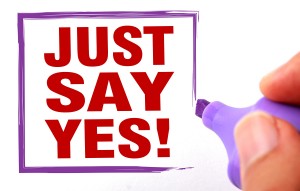
Thinking Styles: Find Out How You Think
In my work as a coach, I find most of us can’t identify our own thinking styles. We’re too immersed in our behaviors and habits.

In my work as a coach, I find most of us can’t identify our own thinking styles. We’re too immersed in our behaviors and habits.

Typically, we handle problems in a tried and true way that we’re comfortable with. We don’t even think we have a thinking style because it’s
What’s your thinking style? Just like we have personality preferences for introversion and extraversion, we also have preferred ways of thinking about a problem. There’s

Everyone wants to be seen, heard and appreciated. Our brains contain special mirror neurons that give us the ability to sense what others feel. We

I’ve noticed that when we’re having conversations at work, many of us confuse empathy with sympathy. Sympathy is feeling for a person. It often involves

In everyday conversations – whether with friends, family or coworkers – most of us have an empathy deficit – we don’t express empathy enough. Everyone

I’ve been very impressed with a couple of books about improv comedy and how people are using the rules of improv comedy to improve conversation

Conversations at work can often feel more like political debates and battles between egos. People with strong points of view argue and debate without anyone

I’m intrigued by conversation social signals, as described in the book by Alex Pentland called Honest Signals: How They Shape Our World. Pentland’s research reveals

If you strive for better communication at work, you’d be wise to learn about the social signals you transmit when you have a conversation with

Join Nancy as she talks with Meredith Hirsh, her client, on her podcast, Working Healthcare. Learn when to seek a therapist versus a coach and

Listening may be the most difficult skill to master when communicating effectively. But master it, we can! The non-verbal part of communicating is the most

How do you test your leadership insights? “Innovation is seeing what everybody has seen and thinking what nobody has thought.” ~ Dr. Albert, Szent-

An organization’s health is only as sound as its leader’s decisions. Some companies prosper from wise leadership directions, while others struggle after flawed choices—choices that







